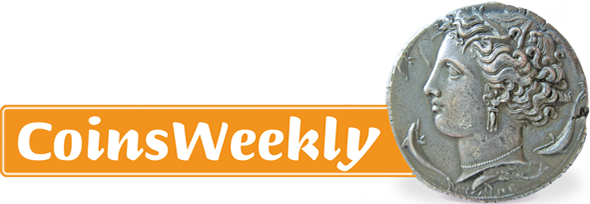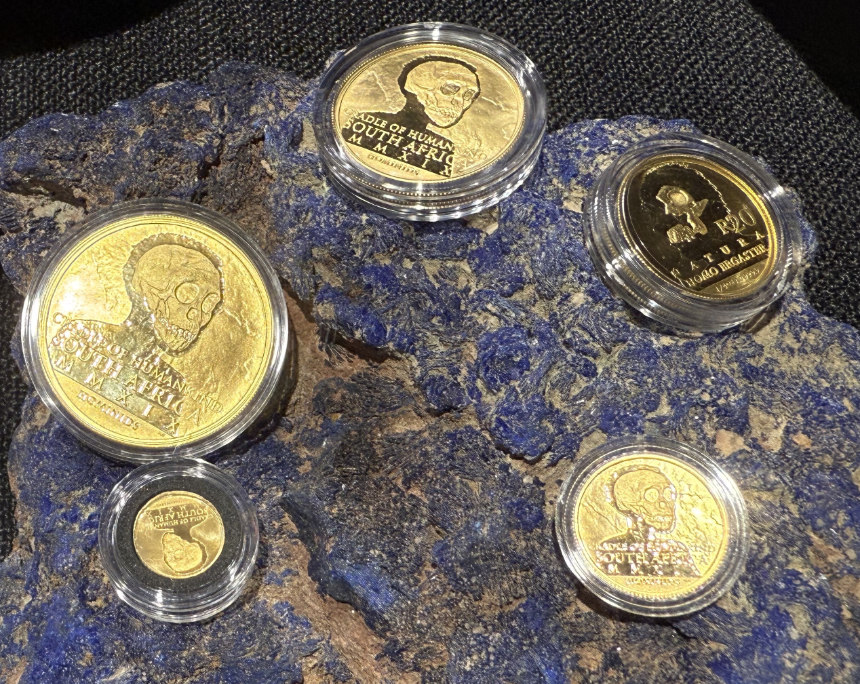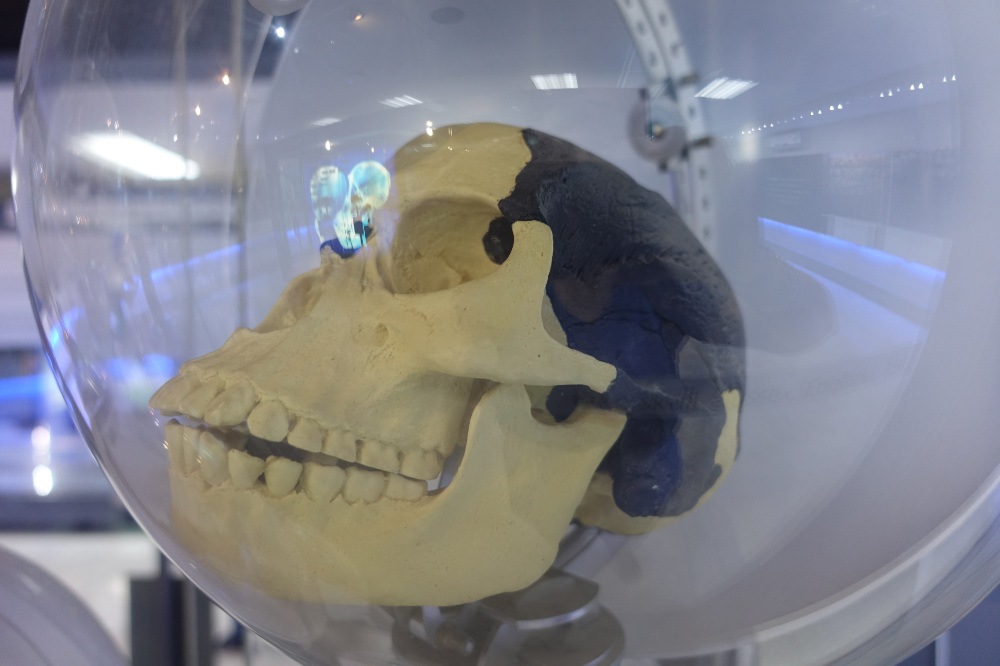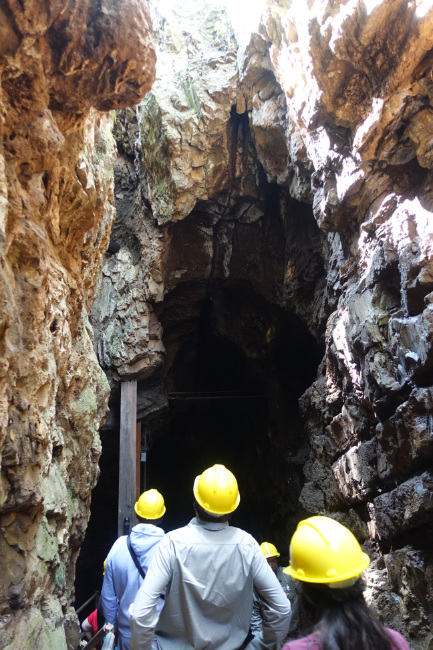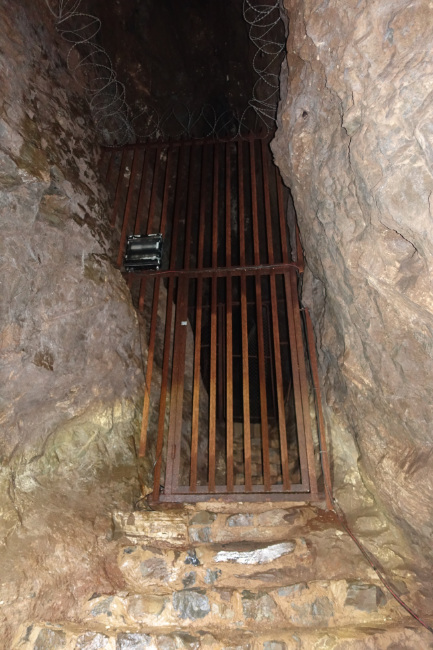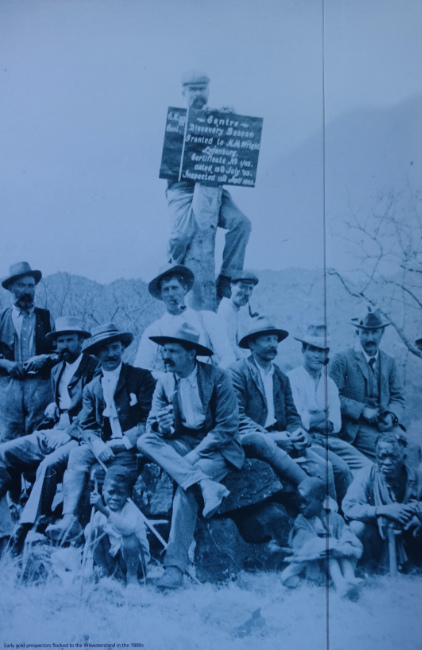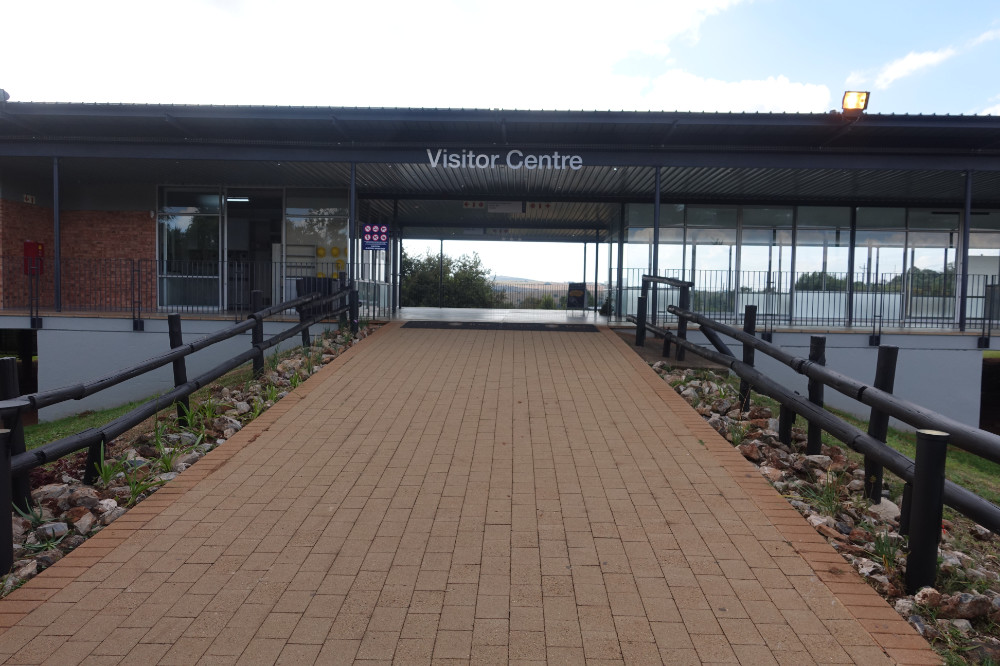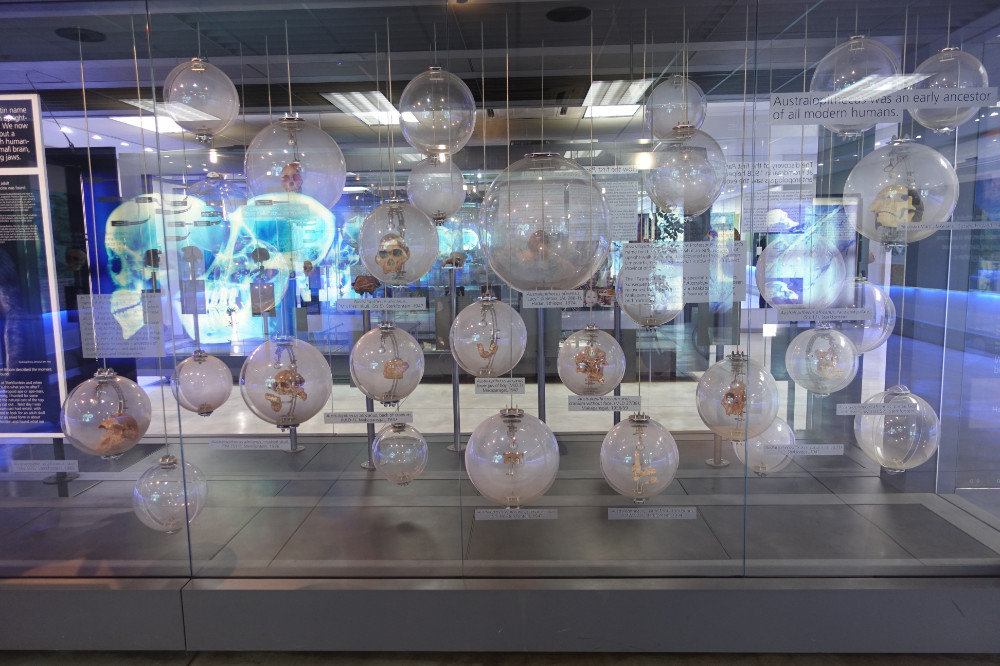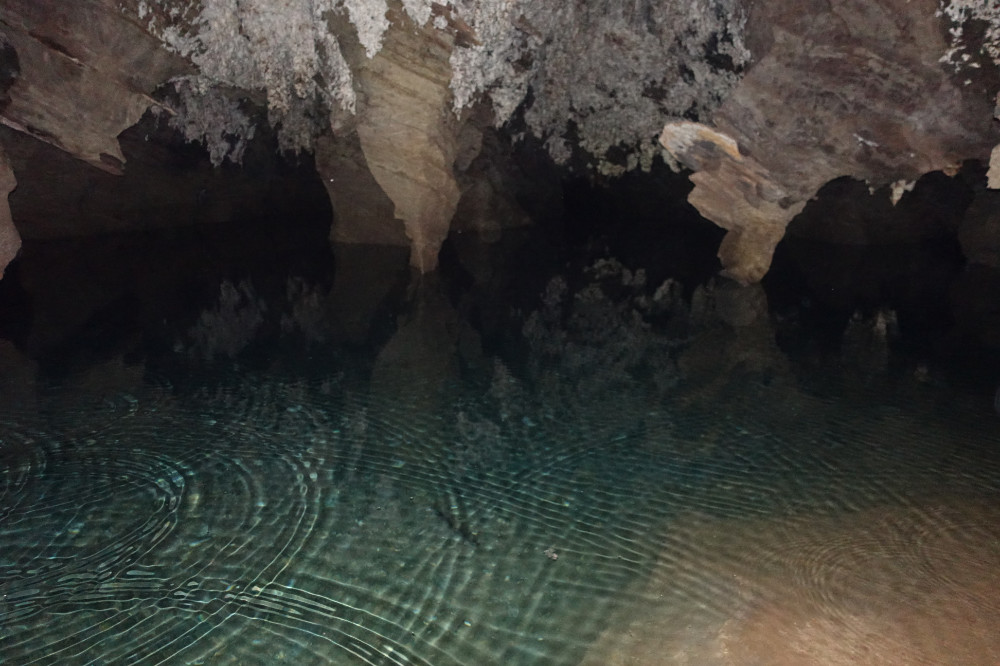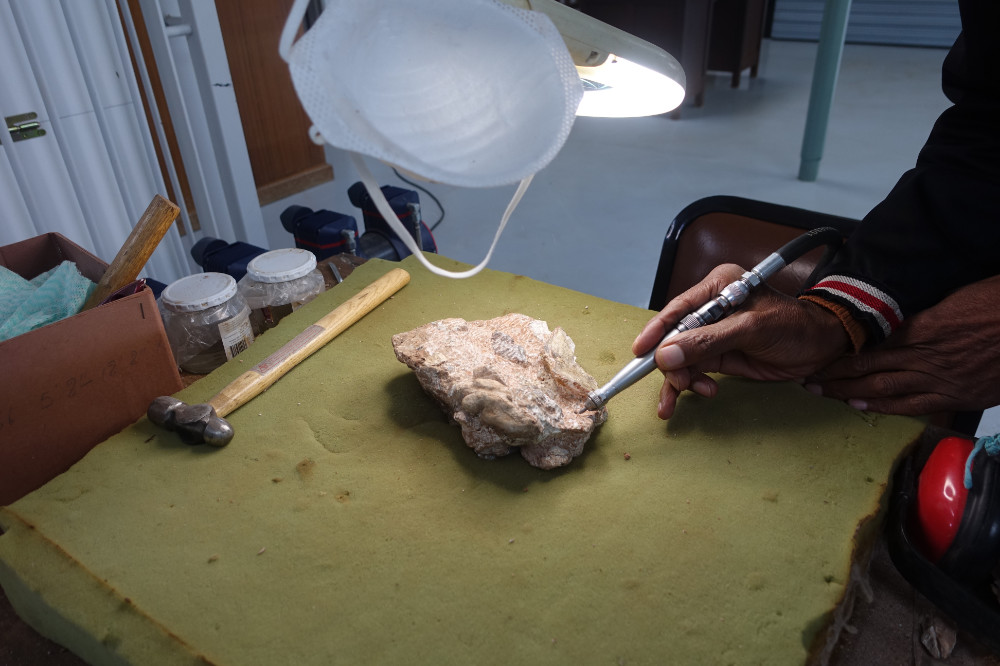The Cradle of Humankind
by Ursula Kampmann
The cradle of humankind is said to have been just 50 kilometres north-west of South Africa. In 2019, South Africa dedicated a small coin series to this subject, as people in Africa are right to be proud of the fact that Homo Sapiens came from southern Africa some 200,000 years ago. Today, the cradle of humankind is a UNESCO World Heritage Site. It is home to the largest collection of fossilised remains of early humans in the world.
Content
How fit am I? When a travel company asks that question, alarm bells go off in my head. Do I really want to go into the Sterkfontein Cave? Well, it is a central part of the Cradle of Humankind, which is a UNESCO World Heritage Site. But I’m asked whether I’m claustrophobic, whether I can squeeze through narrow, low passages – all with no chance of turning back! Slightly unnerving!
As we stand at the entrance, I size up the crowd. Some of them are clearly carrying more weight than I am. And that woman over there is even carrying a baby! So, if she can make it through, so can I!!!
Next shock: The local guide warns us to stay on the paths, as there are plenty of venomous snakes in the brush: puff adders, cobras, mambas, and more. And I’ve read that South Africa currently has a shortage of antivenom. Can you imagine how carefully I put one foot in front of the other, making sure I don’t overlook a snake?
A New African Self-Confidence
You’re probably wondering why, as a numismatist, I’ve taken it upon myself to rival the speleologists. Well, the answer is simple: The Cradle of Humankind is a central symbol of (South) African self-confidence. The South African Mint dedicated a successful coin series to it and to the relics of early humans found there. This wasn’t just jumping on the dinosaur bandwagon that swept through international mints after Jurassic Park. The finds from the Cradle of Humankind make it indisputably clear that modern humans have their roots in Africa.
The Missing Link
One might argue that it no longer matters where modern humans roamed a few hundred thousand years ago. But in the early 20th century, that was not the case. The Germans had discovered their Neanderthal in 1856; the French boasted about a skull fragment since 1908; and paleontologists were already debating whether German or French early humans were older. Who got upset about that? The British, of course. They eagerly embraced one of the greatest frauds in paleontology: the Piltdown Man. His skull supposedly proved that the British Empire had already been ahead in the Paleolithic…
The Sterkfontein Cave
That debate happened about a century ago but still echoes today. A new Africa-centered historical narrative is proud that the first humans were black. That’s why the Cradle of Humankind is so important to the new South African self-awareness. And that’s why four or five dozen South Africans, along with me, are putting on helmets to descend into the Sterkfontein Cave.
It is one of around 15 caves that were declared a UNESCO World Heritage Site in 1999 under the name “Cradle of Humankind.” About one-third of all known early hominid remains – the so-called missing links to apes – come from these caves.
Sterkfontein contributed some especially interesting finds. For example, “Mrs. Ples,” named after the genus Plesianthropus (=almost human), was found here. So was Little Foot, the most complete skeleton of Australopithecus prometheus ever discovered. The University of the Witwatersrand is dedicating a special exhibition to Little Foot in 2025, which I visit with interest before putting on my helmet and descending the steep stairs with the other visitors.
At first, I don’t find it too threatening. I’m wearing just the right shoes. I have to duck once or twice and I’m glad for the helmet, since I overlook several protruding rocks. I barely get out of breath because our guide stops often to point out various features. He shows us a grate and tells us that behind it lies the Little Foot excavation site, which of course we are not allowed to see. Imagine a horde of curious tourists trampling such a unique dig site!
The Stalactite Cave
So in the Sterkfontein Cave, it’s more about the spirit of the place than what I actually see. And that turns out to be an average stalactite cave – not particularly spectacular. Well, I’ve seen the Postojna Cave and the Schulerloch near Kelheim. I know Pech Merle and Niaux. So, I’m not exactly blown away by what we’re shown on the tour.
No surprise! Most of the stalagmites and stalactites are gone. While the Postojna caves became a protected tourist attraction in the 19th century, no one near the gold rush town of Johannesburg had use for such frivolous nonsense. What they needed was lime for gold mining. So from the late 1890s, workers at Sterkfontein scraped off the limestone to make a good profit. They kept telling their foremen about human bones they found. The foremen passed this on to geologist Guglielmo Martinaglia, who tried to get paleontologists involved. But they were too busy arguing over the missing link to pay attention to the site that might have solved their debate.
Excavations only began in 1936. They continue to this day and have revolutionized our understanding of human history.
Today, a large, well-designed modern visitor center informs the brave souls who descend into the cave about the history reconstructed from the finds at Sterkfontein. We pass through it, but don’t really have time to engage with the well-made exhibits. Just a few quick photos – that’s all. I don’t want to hold up the group already!
The heart of the exhibition is a reconstruction of the complex path to modern humans. Replicas of the most important human fossils, along with some originals, are arranged in a sort of sequence. It is repeatedly noted that this sequence is by no means definitive.
The visitors aren’t that interested anyway. They just want to get into the cave and test whether they’re really not claustrophobic. Well, I almost get claustrophobic as I squeeze through the narrow corridors with all these people. The cave is far too cramped for all of us – especially since everyone wants to take the perfect selfie. At the underground lake, a child nearly falls into the water. I’ll admit, I would’ve been more amused if the kid’s mother – who was wildly waving her phone – had fallen in instead.
Then I understand why we were warned. Instead of going back up the wide staircase, the guide forces us through a narrow passage. It’s so low, the steps so high, that I sit down with legs extended and slide feet-first through the corridor. Crawl? Forget it! Or do you want to go headfirst into the unknown? My freshly put-on black pants gradually take on the cave’s reddish-brown hue. Naturally, the group now stretches out endlessly – climbing about 60 vertical meters in narrow passages (with several dips downwards in between) is not for everyone.
But then – we make it! We all emerge back into the daylight! Including the mom with her baby in a sling – who, by the way, kept up quite well near the front of the group.
We watch bones being carefully extracted from the rock, and then – we’re back to everyday life. We did it.
Would I go down into the Sterkfontein Cave again? Well, I’ve experienced the “genius loci.” The exhibition was good, but similar ones are found in natural history museums all over the world. I don’t regret my visit, though. Because, as I said: Sterkfontein is an essential part of the new African self-confidence. And I paid tribute to it with my adventurous visit.






